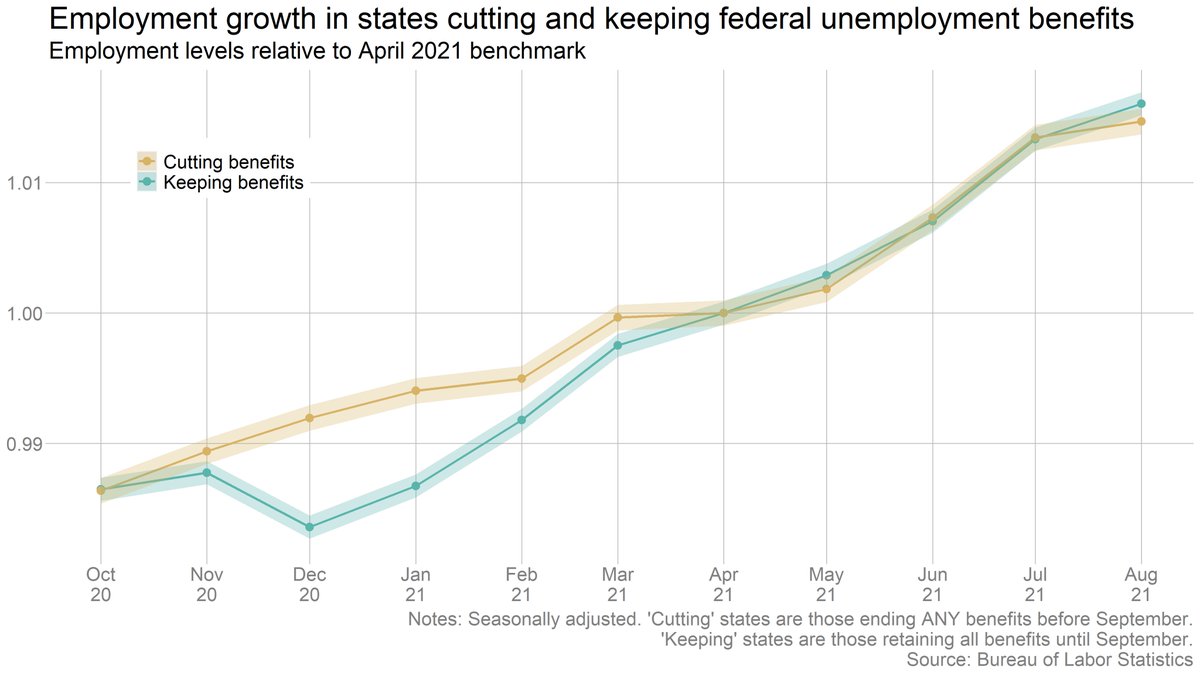
Lots of new state labor market data today!
State and local employment/unemployment: bls.gov/news.release/j…
State-level JOLTS (new report!!!): bls.gov/news.release/j…
State and local employment/unemployment: bls.gov/news.release/j…
State-level JOLTS (new report!!!): bls.gov/news.release/j…
I'm busy with other stories today, so won't be delving into the numbers in depth, at least right away. But a few charts to update my earlier reporting on the impact of cutting off UI benefits.
nytimes.com/2021/08/20/bus…
nytimes.com/2021/08/20/bus…
The short version: Still no evidence that states that cut off benefits early have seen significantly faster job growth than states that kept the benefits. The two groups have seen essentially identical job growth since April. 

These numbers are from early-to-mid September, just after the extra benefits ended nationally. That makes this a somewhat tricky month to interpret.
On the one hand, if you thought UI was directly keeping people out of the workforce, then you'd have expected to see a surge of people returning to work in the "cutoff" states in the spring/summer, and a surge in the non-cutoff states in September.
We don't see either.
We don't see either.
OTOH, if you think the UI impact is more about people building up savings, then you'd expect more of a lagged effect, with employment in the cutoff states gradually pulling away. We don't see that either.
To be clear, none of this is a perfect experiment. These states differ in all sorts of ways: the makeup of their economies, their responses to the pandemic, the size/timing of the Delta variant, etc.
Notably, the non-cutoff states saw larger declines in employment (on avg) early in the pandemic, so we might expect them to see faster growth not. Still, no obvious sign that anything changed once states started cutting off UI. 

And if we focus on pairs of states that had similar employment patterns early in the pandemic, we see no sign that states that cut off benefits have pulled away. 

That's all from me for now. I'll try to dig into the JOLTS data later if I have time. In the meantime, follow @nick_bunker for state-JOLTS goodness.
• • •
Missing some Tweet in this thread? You can try to
force a refresh













